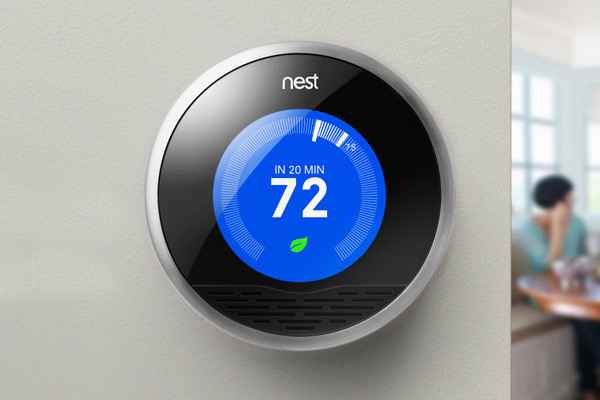ENGN8527
Smart Grids 2
Traditional Grid
Relatively few remote generators, inflexible loads and centralised control
Smart Grid
Many distributed generators, flexible prosumers and decentralised control
Comparison
Comparison
Comparison
Comparison
Outline
Demand Response

- Special contracts with large loads
- Network operator sends request to defer load
- We want to extend this to small loads/prosumers
Demand Response
Demand Response
- Reduce network peaks
- Balance renewable supply
- Provide network support



Prosumers
A network participant who has the capacity to both consume and produce power
Prosumers trade power and provide other network support services
- Homes
- Electric vehicles
- Industry
- Office buildings
Prosumer Activities
- Communicate with network
- Buy and sell power
- Balance supply and demand
- Regulate voltage
- Regulate frequency
- Avoid overloading network
Incentives
The network/retailer/aggregator/market may offer:
- Paid service requests
- Time-varying pricing
- A market for trading
Paid Service Requests
Participants are offered contracts to provide services, either as requested or continuously
Utility requests 1000 houses to drop consumption by 500W each for 30mins, in order to prevent upstream line rating violation
Utility enters into an agreement with owners to control the power factor of 15 inverters, for voltage regulation purposes at the end of a feeder
Time-varying pricing
Time-varying prices for the consumption of real/reactive power. These are often the marginal prices of an underlying market.
- Time-of-use pricing
- Critical peak pricing
- Real-time pricing
A market for trading
Other market mechanisms where agents can trade blocks of energy either into a pool or directly with other agents
A trading agent offers Margaret's excess 2kWh late afternoon solar generation on the market for 40c. Sarah's agent accepts the offer as it is expecting the family EV to be home and in need of charging by this time.
Retail Prices
Flexible Prosumers
Smart Appliances


Existing smart appliances offer:
- Wi-Fi connectivity
- Smart phone apps
- Notifications
Further offerings will develop along with the IoT
Energy Management System
Device Scheduling
For the time-varying price incentives, the EMS decides on behalf of occupants how to schedule devices to minimise costs.
Device Scheduling
Occupant Constraints
Occupants have hard constraints about the operation of devices. They can also have softer preferences, which are modelled as "comfort" costs.
Specified explicitly, or learnt by the EMS (e.g., Nest).
For example, an occupant is happy with an ambient temperature between 20-22°C from 5pm-11pm. Outside this temperature range they experience a "comfort" cost of 40c/°C/hr. They have a hard constraint that the temperature must not stray outside the 18-26°C range.
Considerations
- Continuous or discrete time
- Reactive or proactive control
- Policy based or online
Receding Horizon Control (MPC)
Receding Horizon Control (MPC)
Receding Horizon Control (MPC)
Optimisation Problem
For one horizon, assuming we have constant power devices, and ignoring the reactive component
- \(i:\) device index
- \(t:\) time index
- \(p_{i,t}:\) powers
- \(x_{i}:\) other variables
- \(\psi_t:\) prices
- \(f_i:\) comfort cost
- \(g_i:\) constraint funcs
- \(\min_{p_{i,t},x_i} \sum_t \psi_t \sum_i p_{i,t}\)
\(+ \sum_i f_i(p_i,x_i)\) - \(g_i(p_i,x_i) \leq 0\)
- \(\underline{p} \leq \sum_i p_{i,t} \leq \bar{p}\)
Appliance Modelling
- Battery
- Washing machine
Battery
Linear approximation of battery
Parameters
- \(\eta:\) efficiency
- \(\bar{p}:\) max power
- \(\bar{E}:\) capacity
Variables
- \(p_t^c:\) charge power
- \(p_t^d:\) discharge power
- \(E_t:\) stored energy
Constraints
- \(p_t^c \in [0,\bar{p}]\)
- \(p_t^d \in [0,\bar{p}]\)
- \(E_t \in [0,\bar{E}]\)
- \(E_t = E_{t-1} + t^{stp}(\eta p_t^c - p_t^d)\)
Washing Machine
Constant power shiftable load
Parameters
- \(t^e:\) earliest time
- \(t^l:\) latest time
- \(d:\) duration
- \(p^{nom}:\) nom power
Variables
- \(u_t:\) run
- \(p_t:\) power
Constraints
- \(u_t = \{0,1\}\)
- \(p_t = p^{nom} \sum_{t'=t-d+1}^t u_{t'}\)
- \(\sum_{t=t^e}^{t^l} u_t = 1\)
Prosumer Coordination
Herding
Considerations
- Quality
- Scalability
- Reliability
- Communications
- Equipment costs
- Ease of use
- Privacy
- Greed
Global Objective
Before designing an approach to coordinating prosumers we need to agree what our goal should be as a benevolent network operator
- Maximise generator profits?
- Minimise consumer costs?
- Equal outcome for all (egalitarian)?
- Best combined utility (utilitarian)?
Approaches
- Aggregators
- Central control
- One-shot price
- Iterative price
Aggregators
Intermediate between wholesale market and its customers (could be retailer) who takes advantage of the purchasing strength and greater certainty of a collective
Bids directly into the wholesale market on behalf of customers. Rewards are shared between customers. The aggregator still needs a method of coordinating its customers to get the desired effect.
Central Control
A central authority models the capabilities of participants and sends out direct control signals to participants
Works best with paid service request type incentives
One-shot Price
A price (e.g., RTP) is set based on how the participants are expected to respond
The price is sent out at regular intervals to participants
Iterative Price
A price (e.g., RTP) is iteratively negotiated with participants so that it is informed by how they will actually respond (or at least how they say they will respond)
Once the negotiation has converged on an answer, the price is fixed and participants respond to it for real
Distributed Prosumer Coordination
A fully distributed iterative RTP approach
- Near optimal (utilitarian)
- Preserves privacy
- Models network constraints
- Prices at each bus
- Fast enough for RHC
Model
- \(C:\) set of components (houses, gens, lines, buses)
- \(T:\) set of terminals
- \(L:\) set of connections between terminals
Model
- \(y_i = [p,q,v,\theta]^\mathsf{T}:\) variables for terminal \(i\)
- \(x_c:\) variables for component \(c\) (inc. terminal vars)
Optimisation Problem
\begin{align} &\min_x\sum_{c \in C} f_c(x_c)\quad\color{red}{\text{costs}}\\ &\text{ s.t. } \forall c \in C: g_c(x_c) \leq 0\quad\color{red}{\text{constraints}}\\ &\phantom{\text{ s.t. }} \forall (i, j) \in L: h(y_i, y_j) = 0\quad\color{red}{\text{connections}} \end{align}
where \(h(y, y') := y + Ay'\)
ADMM
Iterative algorithm that allows the problem to be decomposed across linear constraints. Proven to converge when the problem is convex, and linear constraints take on particular form.
Split Into Two
Split Into Two
Split Into Two
House/Generator Payments
\(\lambda_pp + \lambda_qq\)
Visualisation of Algorithm
Visualisation of Algorithm
Visualisation of Algorithm
Visualisation of Algorithm
Visualisation of Algorithm
Visualisation of Algorithm
Visualisation of Algorithm
Results
Get within 1% of the global optimal. Works with AC power flows. Works with household discrete loads. Only a couple of minutes to converge.